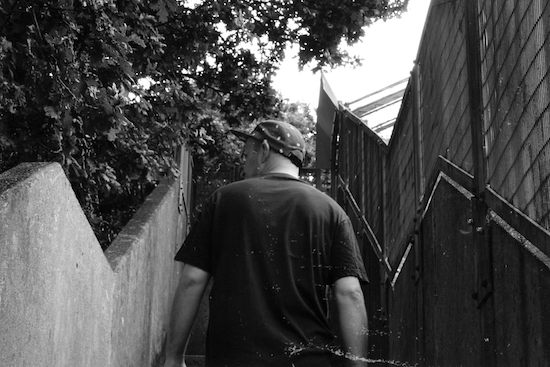Anthoney Hart is a man of many talents. Donning several musical hats across grime, drum & bass and techno, the storied producer brings an abundance of flavours, extracted from the various sub-genres within these sounds, into his extensive sonic palette. He is an admirer of all things rhythm-centred since the age of 12 – most notably the thumping, aggressive and euphoric sound of the early and mid-90s movements of hardcore and jungle, the genres which took a hold of him like a vice grip. With his various side projects, he has evolved and developed this sound beyond traditional genre stratifications while not losing sight of them. From crate digging across London to taking in the influence of his older brother, who was knee deep in London’s warehouse rave scene, Hart has seen his fair share of musical transformation.
After making his first beats at a young age, the Hastings-born, working-class producer shifted to DJing, beginning his broadcast life in earnest via the pirate radio circuit and securing a regular spot on London’s Rude FM. Years of toiling in the underground led to his first album in 2010, before leaving the scene behind him for pastures new. Frequent experimentation followed; his Imaginary Forces and Basic Rhythm monikers allowed a creative freedom to find his musical space, enabling the crafting of muffled, heady, rhythm-led walls of sound that struck a balance between his past and present. This period produced several LPs, including Uppstigande, his unofficial Begotten soundtrack and several loosies as Imaginary Forces, steeped in the visceral nature of UK rave culture.
Now embarking on a new journey as East Man, he constructs minimalist, steely instrumentals that strip grime down to its bare essentials (bass and rhythm), and his anticipated Red, White & Zero album on Planet Mu – featuring many established and burgeoning MCs, and liner notes from leading British academic and theorist Paul Gilroy – serves as the next phase in his adventure. The list of MCs includes Darkos Strife, Kwam, Saint P, Irah, Killa P and more, and Gilroy’s contribution highlights the class tensions and intricacies that take place in London on a daily basis, giving the album thematic weight and focus. In many ways, the album is a celebration of that working class spirit which Hart and his contributors represent, an achievement of that sector of society that get the least love and attention by the powers that be.
Fully circling back to his roots, Hart is now at a stage of artistic satisfaction, confident to take risks and seeing them pay off in huge ways. This journey is reflected in his Baker’s Dozen selections, ranging from baroque pop to infectious dancehall, via extremely leftfield electronica, that are as sombre and bleak as they are mind-bending and forward thinking. Much like the man himself. “There are a few albums I chose because they stay with me and I listen to them all the time,” says Hart. “Some I chose because there are significant musical moments for me, and there’s one which is new that I’ve become obsessed with.”


